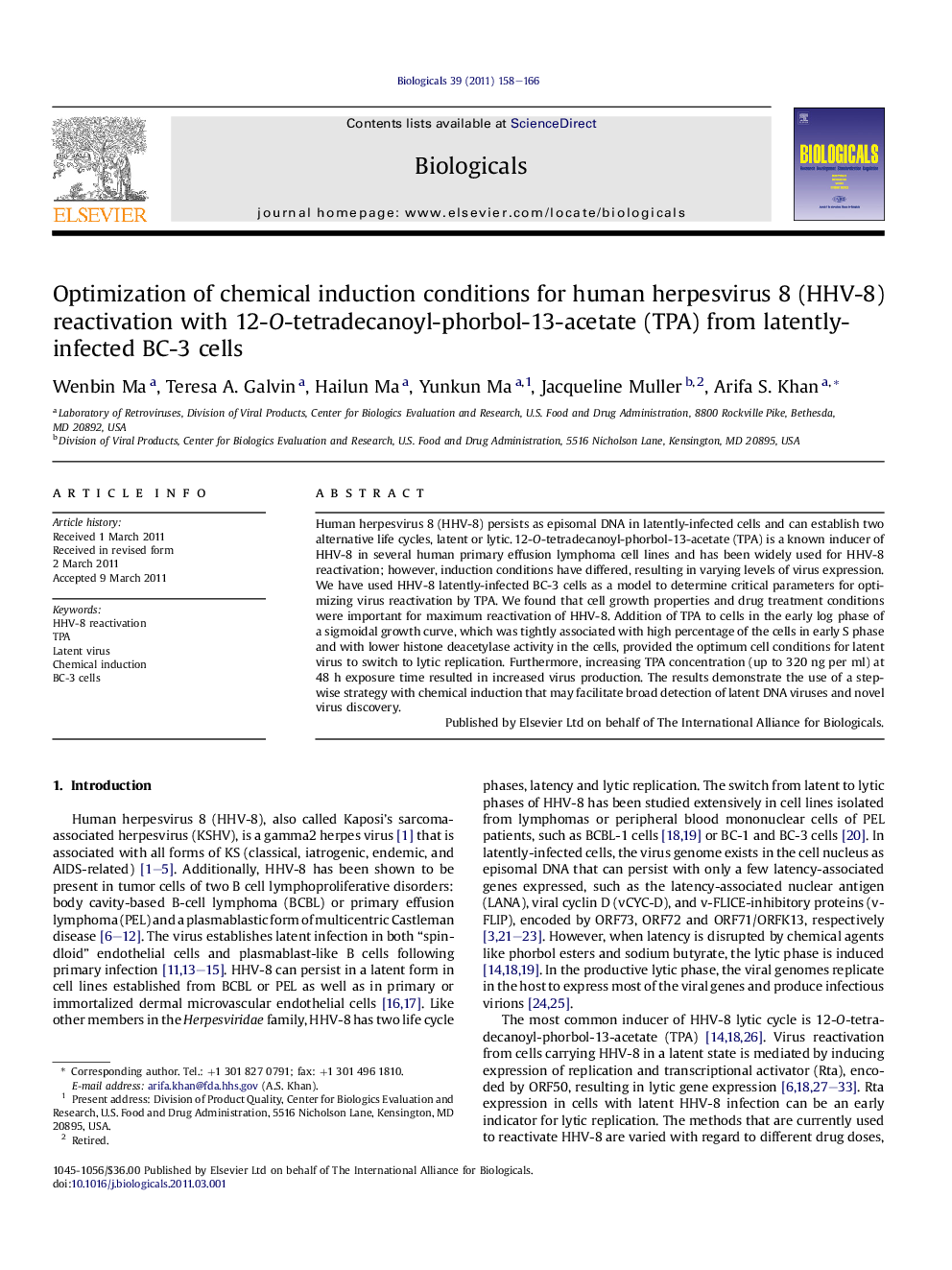| کد مقاله | کد نشریه | سال انتشار | مقاله انگلیسی | نسخه تمام متن |
|---|---|---|---|---|
| 2034400 | 1072011 | 2011 | 9 صفحه PDF | دانلود رایگان |

Human herpesvirus 8 (HHV-8) persists as episomal DNA in latently-infected cells and can establish two alternative life cycles, latent or lytic. 12-O-tetradecanoyl-phorbol-13-acetate (TPA) is a known inducer of HHV-8 in several human primary effusion lymphoma cell lines and has been widely used for HHV-8 reactivation; however, induction conditions have differed, resulting in varying levels of virus expression. We have used HHV-8 latently-infected BC-3 cells as a model to determine critical parameters for optimizing virus reactivation by TPA. We found that cell growth properties and drug treatment conditions were important for maximum reactivation of HHV-8. Addition of TPA to cells in the early log phase of a sigmoidal growth curve, which was tightly associated with high percentage of the cells in early S phase and with lower histone deacetylase activity in the cells, provided the optimum cell conditions for latent virus to switch to lytic replication. Furthermore, increasing TPA concentration (up to 320 ng per ml) at 48 h exposure time resulted in increased virus production. The results demonstrate the use of a step-wise strategy with chemical induction that may facilitate broad detection of latent DNA viruses and novel virus discovery.
Journal: Biologicals - Volume 39, Issue 3, May 2011, Pages 158–166